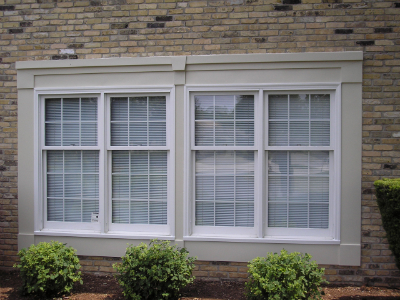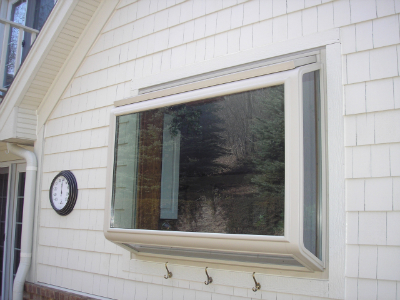Windows
From purchase to installation, we offer complete window services. We have all the major brands and styles that you would want for your home, and we even offer custom colors and sizes.
Most window installations can be completed in one day so any disruptions in your home are kept to a minimum. We are Installation Master certified and provide excellent craftsmanship at affordable prices!

Windows are such an integral part of your home from both the inside and out. It is important that your windows retain and enhance the style and design of your home while at the same time provide the function you need. We will assist you in assessing the special features and functions of a variety of windows suitable for your home.
The major brands in which we specialize include Anderson, Pella, Soft-Lite, and WeatherShield. There is a wide variety of window styles available including, but of course not limited to, bay and bow, double-hung, casement, awning, transoms, and custom-sizes.
Let's Talk About Condensation
Windows do not cause condensation. Windows serve as visible areas for moisture to condense, warning you that there is too much moisture inside your home.
People seem to believe that windows manufacture water. They call up window contractors and say, "My windows are all wet and it's the fault of the windows." Well, not quite. Water on windows is condensation and it can be a problem. However, it's not a window problem and the solution does not come from the windows.
What is Condensation?
Condensation is the result of high humidity that produces a "fog" once it hits a colder surface. Humidity comes from excess water vapor in the air. All homes have a certain level of moisture due to household activities such as cooking, laundry, showers, and dishwashing which can add up to five pounds of water vapor into the air daily. Other moisture producing agents include plants, heating systems, and humidifiers. Condensation usually occurs first on windows because glass surfaces have the lowest temperature of any of the interior surfaces in the home.
What causes window condensation?
Condensation problems are growing and homeowners are concerned. For the most part, the increased condensation homeowners are seeing can be traced to "progress". For example, today's technology produces more efficient, "tighter" homes. This is great for keeping your home more comfortable, quieter, and cleaner but by sealing your home, you are also keeping moisture in. The increasing use of modern energy saving appliances, certain building materials, more gas furnaces, and additional showers are also contributing factors. A little fog on the corners of your windows shouldn't bother you; and it probably doesn't. But fog or frost that covers whole windows should bother you. These visible effects are just the tip of the iceberg. What is happening elsewhere in your home? Your home could be rotting away from the inside out and promoting unhealthy mildew or mold.
Does the amount of condensation depend on the type of window I have?
Recessed windows like bay and bow windows usually experience more condensation than other windows because air circulation around those window types is usually more restricted and they hang away from the insulated house wall. Insulating under the seat and head of the unit will diminish condensation in this type of windows.
Tips to reduce your home's humidity:
- Be sure all ventilation to the outside is functional. Use kitchen and bathroom exhaust fans while the humidity-producing activity is going on. Consider installing a laundry room exhaust fan.
- Air out your kitchen, bathroom, and laundry room during or just after use. Because outside air usually contains less water vapor, it will "dilute" the humidity of inside air.
- Install ceiling fans to keep air circulating within your home.
- If you have a furnace humidifier or other humidity device in your home, be sure it is adjusted to produce the proper amount of humidity, or turn it off. The humidity produced elsewhere in your home may mean these devices are not needed at this time.
- If troublesome condensation persists, see a heating contractor about and outside air intake for your furnace, installation of ventilating fans, air-to-air heat exchanger or heat recovery ventilators.
Remember: by reducing the humidity in your home you will eliminate most, and probably all, of the condensation!
Recommended Winter Humidity Levels:
Outside Temperature -20 ° F 15% Inside Relative Humidity
Outside Temperature -10 ° F 20% Inside Relative Humidity
Outside Temperature 0 ° F 25% Inside Relative Humidity
Outside Temperature 10 ° F 30% Inside Relative Humidity
Outside Temperature 20 ° F 35% Inside Relative Humidity

Marvin Garden Window
Falls Siding, Inc. - Exterior Home Improvements
Contact us:
Office: 262- 628-0808
fallssiding@gmail.com